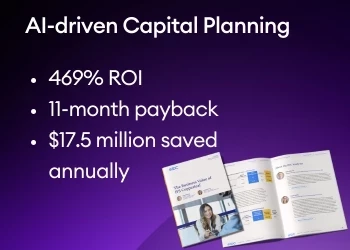How to Improve and Optimize CX with (Big) Data
Add bookmarkSo how can you collect and process (big) data to get quantifiable multi-channel usability issues insights to improve and optimize your customer experience?
MEASURING VISITOR BEHAVIOR
Customer experience is all about getting to know your customers. What are their motives when deciding what they like to do? When your web data shows that you are missing sales on your website, there must be something that is driving your customers away, or making them postpone their purchases. Many companies use tools to replay the movement of visitors on their website, which is a good way to determine what happened during the visit. It tells you more about the actual reason for the drop-out.
QUANTIFYING ISSUES
However, if you have a website with hundreds of thousands of visitors a day, it is impossible to replay all visits. If you only watch a few of these, the chances are that you are missing the big picture and will start to make changes that have a little, no or even a negative effect on the ROI of your website. That’s why you need to know the impact for all your visitors.
THE MULTICHANNEL CUSTOMER JOURNEY
The ‘big picture’ you need, consists of even more than being able to take all your visitors into account. It’s about optimizing the customer journey over all devices. So if you are only ‘replaying’ one touch point (e.g. your website) from that journey, you are not able to value the importance of that channel in the context of the entire journey.
UNIQUE IDENTIFYER
We once saw this at a Fortune 500 travel company. They reviewed their mobile channel and concluded that the amount of sales had to be increased, to have the same conversion rate on mobile and tablet as they had on the website. In order to do this, they increased the presence of the ‘book now’ button on their mobile website. This led to a very small increase in mobile sales. Furthermore, overall sales even decreased, as this overly ‘pushy’ button making people drop out of the funnel at this very early stage of their customer journey.
Later, quantifiable cross-channel customer journey measurements, using a unique identifier, showed that people used the mobile website for orientation and came back later to make the eventual booking on the website. The mobile website was indeed a key factor in many customer journeys, but not as a point of sale. Based on this data-driven proof, the management team was convinced and changed their goals for mobile and tablets to optimize the customer journey as a whole, rather than in isolation.
DATA GOVERNANCE
When mapping the entire customer journey, you are obviously collecting great amounts of data. That’s why data governance is a very important matter. You want to make sure that all data complies with all privacy legislation and with your company’s legal policy. Many companies therefore want to store data in their own country so they know exactly which laws apply. Therefore you need a solution through which you can configure these settings for your company, your country and most importantly to meet the demands of your customers.
FLEXIBLE DEPLOYMENT
Although customer experience optimization is a continuous process, these kind of evaluation tools are especially needed in case of major changes e.g. when you release a new website. Usually, these new releases imply a few months of very intense customer experience optimisation. New improvements are developed and implemented all the time. But after a certain period of time, most usability issues are fixed and you go into biweekly or monthly release cycles. The need for an entire customer experience infrastructure decreases. In many cases this means that you have a costly infrastructure in place that only delivers ROI for a few months. So an ideal solution would be to have a SaaS solution that you would only deploy when needed.
CHALLENGES
So in summary, here are the main challenges online marketing professionals face, when it comes to replaying visitor behavior, in order to find usability issues that affect their website ROI:
•Quantifying the issues. Being able to segment and define the most urgent issues to increase sales quickly.
•Replaying customer journeys over multiple touch points. Being able to add a unique identifier to value a touch point within the entire customer journey.
•Maintaining optimal data governance. Making sure all cross-channel data collection and storage is compliant with relevant legislation and company policy.
•Deployment on demand. The flexibility to deploy and use the infrastructure only when needed (such as after new website releases), to optimize ROI.



















